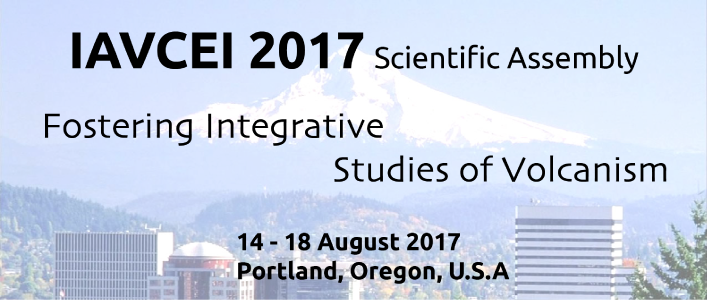Continental arc to rift volcanism of the Southern Rocky Mountains – Southern Rocky Mountain, Taos Plateau and Jemez volcanic fields of southern Colorado and northern New Mexico, USA

Pre-meeting field trip, August 7-13; max/min participation, 30/24
The southern Rocky Mountains of northern New Mexico and southern Colorado preserve the Oligocene to Pleistocene record of North American continental arc to rift volcanism. The 35-23 Ma Southern Rocky Mountain Volcanic Field (SRMVF), spectacularly preserved in the San Juan Mountains of southern Colorado, records the evolution of large andesitic stratovolcanoes to complex caldera clusters, from which at least 22 major ignimbrite sheets (each 150-5,000 km3) were erupted. Outflow deposits of the SRMVF preserved along the broadly uplifted northwestern flank of the largest northern Rio Grande rift basin (the San Luis Valley), provide critical structural and temporal constraints on the inception of extension. Coincident with waning stages of SRMVF caldera-forming volcanism (~25.4 Ma), extensional tectonism was accompanied by a transition from bi-modal early Miocene to intermediate-composition late Miocene and dominantly basaltic Pliocene rift volcanism of the Taos Plateau in the southern San Luis Basin. Concomitant rift volcanism in the Española Basin and bordering Jemez Mountains of northern New Mexico records a similar Miocene eruptive history dominated by intermediate-composition volcanism that transitioned locally to Pliocene rift-related basaltic volcanism of the Cerros del Rio volcanic field and culminated in eruptions of the iconic rhyolitic Pleistocene Bandelier Tuff and formation of the Valles caldera along the northwestern rift-basin margin.
This six-day, seven-night field trip will focus, in broadly equal proportions, on rift-related extensional volcanism of the Jemez Mountains and Taos Plateau regions during the first half of the trip and on caldera-forming volcanism of the Southern Rocky Mountain volcanic field during the second half of the trip. The 35 million-year volcanic history of the region highlighted by new geologic mapping, high-resolution geochronology, petrologic, geochemical, and geophysical data facilitates discussion of (1) the magmatic response to the tectonic transition from subducted-slab arc to continental-rift volcanism; (2) the nature and temporal evolution of rift magmas; (3) fault controls on the spatial evolution of rift magmatism; (4) the diversity of continental-arc ignimbrite volcanism and associated lavas; (5) ignimbrite caldera structure and associated intrusions in 3-D; (6) the role of recycled crystal mush and magmatic cumulates during growth of Cordilleran batholiths; and (7) high-precision geochronologic contributions to interpretation of relations between regional tectonic and volcanic processes. Most stops will be along roads, but there will be moderate hikes on trails of less than 1-hour duration covering 1–2 km with modest elevation gain of <150 m.
The route will progress in reverse stratigraphic order, starting in the Jemez Mountains of New Mexico and proceed northward to San Luis Basin and San Luis Hills before turning west to the southeast and central San Juan Mountains. Our last full day takes us to the little-visited and only recently mapped, Bonanza caldera of the northeastern San Juan Mountains and on the final day, we leave the San Luis Valley to briefly explore the Tertiary subvolcanic plutons of the Collegiate Range along the west side of the Arkansas Valley rift valley, en route to Denver.
Logistics:
The trip will depart from Santa Fe, NM (Hyatt Place Hotel) by 8 a.m. on Monday, August 7th and end mid-day on Sunday, August 13th at Denver International Airport in time for same-day flights to Portland, OR. We recommend participants fly into Albuquerque, NM and take airport shuttle transportation to the Hyatt Place Hotel in Santa Fe. The first two nights will be in Santa Fe, the oldest capital city in the United States (founded in 1610); nights three and four, we stay in the historic Sagebrush Inn at Taos, NM (favored accommodation of Georgia O’Keefe); nights five and six will be in the heart of the San Juan Mountains in South Fork, CO, and a final night will be along the banks of the Arkansas River in Salida, CO (within easy driving distance to Denver the following day).
Estimated cost:
$850/person, includes transportation from Santa Fe, NM to Denver International Airport, Denver, shared hotel-style lodging (two people to a room) including the night before the meeting (August 6th), breakfasts and all lunches and snacks. Participants are responsible for their own dinners; dining recommendations and transportation to restaurants is provided. Participants are responsible for flights to Sante Fe, NM and from Denver, CO.
Leaders:
Ren Thompson, U.S. Geological Survey
Kenzie Turner, U.S. Geological Survey
Peter Lipman, U.S. Geological Survey
John Wolff, Washington State University
Michael Dungan, University of Oregon
Olivier Bachmann, Department of Earth Sciences, ETH Zurich


